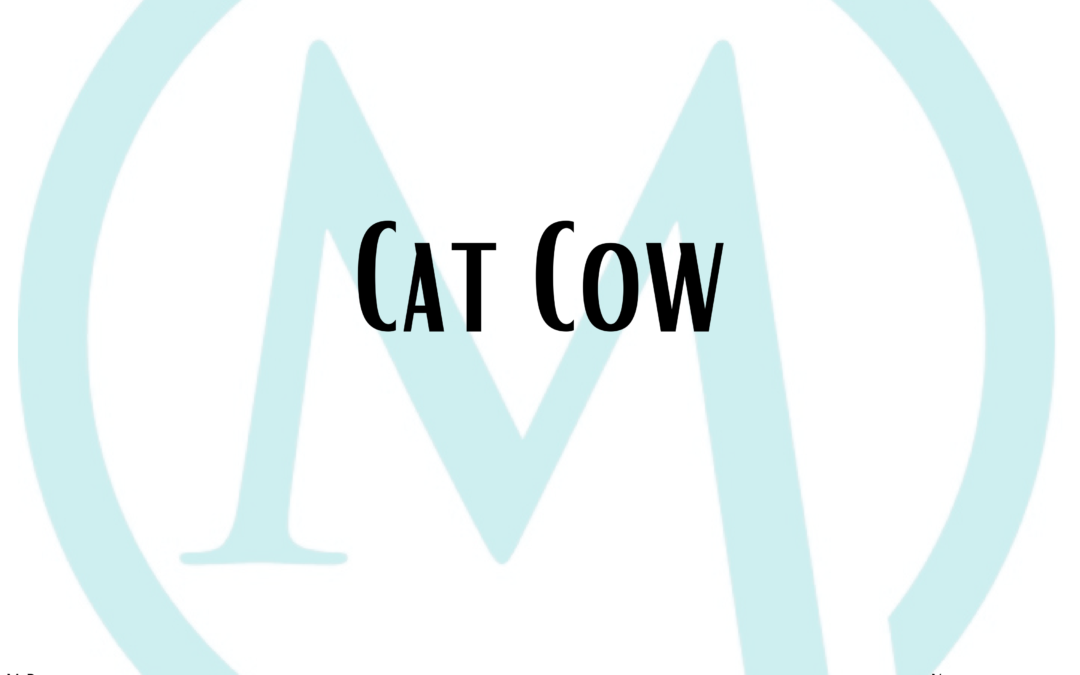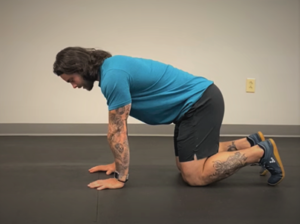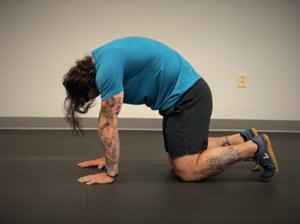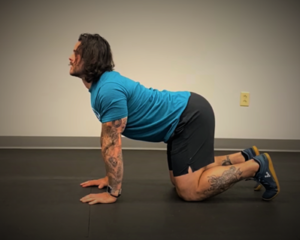Cat Cow Mobility Exercises
Mobility exercises have become highly popular amongst social media. We’re constantly seeing new variations of how to mobilize our body with an end goal to move better and feel better. But what is the benefit of performing mobility exercises along with your regular workout routine? And when is the best time to do a mobility exercise?
Mobility is how a joint moves through its full range of motion. The range can vary depending on the type of joint, such as a hinge joint (ie. knee and elbow) versus a ball and socket joint (ie. hip and shoulder). Mobility training is a warm up before any form of sport or activity to get the joints moving. When joints are moving properly, range of motion increases, while the risk of injury decreases. When joints are not working through their full range of motion, this leaves the opportunity for injuries to occur. Limited range of motion through activity or in daily repetitive movements can create an unequal distribution of workload throughout the muscles and joints. When muscles are overworked and taking on too many loaded movements they can get overworked and weakened over time. This can provoke muscle tears, disc bulging, slipped discs, tendon tears, ligament tears, sprains and strains.
When we are constantly working in the same range of motion, our myofascia (“myo ” meaning muscle, “fascia” meaning connective tissue) can become tight. Therefore, restricting optimal range of motion and creating dysfunction of our muscles. Myofascia is the connective tissue that encompasses the muscles within our body. Our body is composed of many different myofascial lines that help pull muscle groups to work in unison during specific movements throughout all planes of motion. Ideally when fascial lines work together they create power of movement, flexibility, stability, and help to support strong posture.
In order to strengthen these myofascial lines that compose muscle groups, we have to mobilize them first. Mobility exercises are best performed pre-activity. One of the most common mobility exercises is the cat-cow, commonly seen in yoga flows. Cat-cow mobility is a whole body mobilization that recruits the hip and shoulder structures while developing flexibility of the spine. When the shoulders, hips and spine have a full range of motion, the muscles, ligaments and tendons work to their full potential without overstrain them. The cat cow mobility exercise is a great full body movement to prep the body for activity
Starting in quardaped (on all fours):
- In order to perform a cat-cow, begin on the floor on all fours.
- Stack your wrists directly below your shoulders.
- Stack your knees directly below your hips.
- Keep wrists shoulder width apart, and knees hip width apart.
Moving into the cat position:
- Exhale as you are bringing your abdomen in closer, flexing your core.
- Arch your spine toward the ceiling (like a scared cat).
- Tuck your “tail”, rotating your pelvis forward.
- Tuck your chin to your chest.
- Separate your shoulder blades so they are as far apart as you can get them.
Then, move into the cow position:
- Inhale deeply as you expand your abdomen.
- Pull your belly towards the floor, chest in between the shoulder blades.
- Rotate your hips up toward the ceiling.
- Bring your head back, chin up.
- Squeeze the shoulder blades together.
Hold each position for two seconds, performing 10 to 15 repetitions of each movement. If pain or extreme discomfort is experienced during any portion of the mobility exercise, stop the movements immediately. Mobility exercises should not be performed if you have recently undergone spinal or abdominal surgery, you have an injury to the shoulders, wrist, hip, back or knees. Those who have arthritis of the knees or wrist should be cautious before performing any quadruped exercise.
Check out our video tutorial for a more in depth step by step guide to properly doing the Cat Cow Exercise. For help with any aches, pains, or discomfort, please call us or schedule an appointment today!




